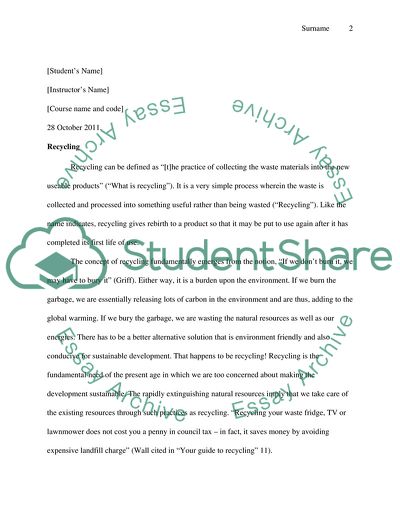Recycling as a Simple Process: the Waste is Collected and Processed Research Paper. https://studentshare.org/environmental-studies/1759528-how-recycling-works
Recycling As a Simple Process: The Waste Is Collected and Processed Research Paper. https://studentshare.org/environmental-studies/1759528-how-recycling-works.


